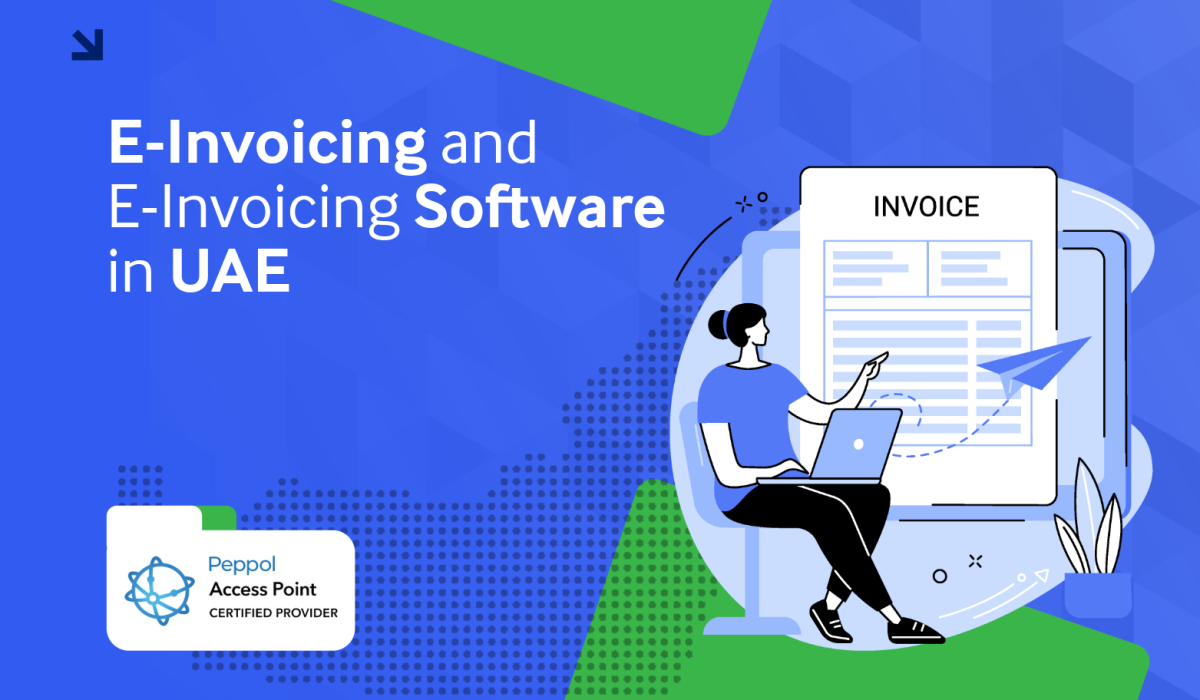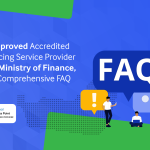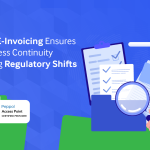E-invoicing is no longer optional for modern businesses — it’s a strategic tool that speeds up cash flow, reduces errors, and keeps companies audit-ready. For firms operating in the UAE, choosing the right e-invoicing software or e-invoicing solution is especially important: it helps meet VAT requirements, secures payment cycles, and integrates billing into the broader finance ecosystem. This article explains e-invoicing, why you need e-invoicing software, what to look for in an e-invoicing solution in the UAE, and how to implement it without disrupting operations.
What is e-invoicing?
E-invoicing means generating, transmitting, and receiving invoices in a structured electronic format that software systems can process automatically. Unlike PDFs or scanned paper invoices, e-invoices use machine-readable data fields so accounting systems and ERPs can validate, post, and reconcile invoices without manual entry. That reduces human error and dramatically shortens invoice creation and payment time.
Why businesses should adopt e-invoicing software
Investing in reliable e-invoicing software delivers tangible benefits across finance, compliance, and operations:
- Faster processing: Automated validation and routing cut down approval times and accelerate payments.
- Improved accuracy: Structured data eliminates manual re-keying mistakes and mismatched invoice lines.
- Better cash flow: Faster invoice cycles and more predictable collections help finance teams forecast and manage working capital.
- Stronger compliance: E-invoicing software captures audit trails and supports VAT and tax reporting requirements.
- Lower costs: Reduced paper, postage, and manual labor lead to lower operating expenses.
- Visibility and analytics: Modern solutions provide dashboards and reports that reveal bottlenecks and payment trends.
E-invoicing software in the UAE — what matters
For businesses in the UAE, using e-invoicing software tailored to the market matters for three reasons: regulatory alignment, integration with local banking and finance workflows, and data security. When evaluating e-invoicing software in UAE, consider these points:
- Regulatory readiness: The solution should support VAT reporting formats and any specific invoice metadata required by UAE authorities.
- Local integrations: Seamless connections to UAE banks, PSPs, and local ERPs reduce friction during implementation.
- Data residency and security: Ensure the provider follows strong encryption standards and clarifies where data is stored.
- Multi-entity support: If you run multiple companies, the software should handle different tax registrations and reporting needs.
- User experience: A clean interface for both accounts payable and accounts receivable speeds adoption and reduces training time.
Key features of a strong e-invoicing solution
Not all e-invoicing solutions are created equal. The best e-invoicing software offers a balanced mix of functionality and flexibility:
- Standardized invoice formats: Support for common machine-readable formats and validations to prevent rejected invoices.
- AP/AR automation: Workflow automation for approvals, three-way matching, and automated reminders to customers.
- APIs and connectors: Ready-made integrations with ERPs, accounting packages, and payment gateways.
- Audit trail & reporting: Detailed logs for every invoice action, and exportable reports for tax audits.
- Real-time validations: Instant checks for VAT numbers, pricing rules, and duplicate invoices.
- Scalability: Cloud-native infrastructure that grows with your transaction volume.
- Role-based access controls: Tight security with configurable permissions for teams.
How to choose and implement an e-invoicing solution
Implementing e-invoicing doesn’t have to be disruptive. Follow a pragmatic roadmap:
- Assess current processes. Map how invoices are created, approved, and paid today — note pain points and error hotspots.
- Set clear goals. Do you want faster collections, fewer disputes, better compliance, or all three? Define KPIs.
- Shortlist vendors. Focus on providers that demonstrate experience with UAE VAT rules and show real integrations with your ERP.
- Pilot before full roll-out. Start with a single business unit or a group of suppliers to test the workflow and catch integration issues.
- Train stakeholders. Provide role-based training for finance, sales, and procurement teams so adoption is smooth.
- Monitor and refine. Use analytics to spot bottlenecks, tweak routing rules, and expand automation gradually.
Common implementation pitfalls — and how to avoid them
- Skipping stakeholder buy-in: Get procurement, sales, and IT involved early to prevent resistance.
- Underestimating data quality issues: Clean up vendor records and master data before switching systems.
- Over-customizing too soon: Start with standard workflows; add complexity only after the basics run smoothly.
- Neglecting integration testing: Test with live data flows between ERP, e-invoicing software, and payments to avoid surprises.
Frequently asked questions
1. What is e-invoicing and how does it work?
E-invoicing is the process of creating, sending, and receiving invoices in a structured digital format. Unlike scanned copies or PDFs, e-invoices use machine-readable data that accounting systems and ERPs can automatically process, validate, and reconcile. This reduces manual work and speeds up payment cycles.
-
Is e-invoicing mandatory in the UAE?
Currently, e-invoicing is not fully mandatory in the UAE, but businesses are strongly encouraged to adopt it to align with VAT compliance, government digital initiatives, and future-ready finance processes. Many companies are adopting e-invoicing early to stay compliant and competitive.
-
Which are the best e-invoicing software providers in the UAE?
Some of the best e-invoicing software providers in the UAE are those that offer VAT-compliant, cloud-based solutions with local integrations. Providers like SMARTeIS by Skill Quotient is one of the popular choices for UAE businesses.
-
How to choose the right e-invoicing solution for my business?
Look for software that:
- Is VAT-compliant with UAE regulations
- Integrates with your ERP/accounting system
- Provides automation (AP/AR, reminders, approvals)
- Offers secure cloud storage and data protection
- Scales as your business grows
-
What are the benefits of using e-invoicing software compared to manual invoicing?
- Faster processing and payments
- Fewer human errors
- Stronger VAT compliance
- Better visibility into cash flow
- Lower operational costs
- Easy audit trails and reporting
-
How do I integrate e-invoicing software with my existing ERP or accounting system?
Most modern e-invoicing software providers in the UAE offer APIs or pre-built connectors for systems like Tally, QuickBooks, SAP, and Oracle. Integration ensures invoices are automatically synced without manual uploads.
-
Does e-invoicing software in the UAE comply with VAT regulations?
Yes. Leading e-invoicing solutions in the UAE are designed to comply with VAT rules, ensuring invoices have the required fields (TRN, VAT percentage, tax amount, etc.). Always confirm with your provider that the software is VAT-ready.
-
What is the difference between e-invoicing and digital invoicing (PDF/Email invoices)?
- Digital invoicing: Sending invoices as PDFs via email.
- E-invoicing: Generating invoices in structured formats (like XML/JSON) that can be automatically read and processed by systems, ensuring faster compliance and automation.
-
How much does e-invoicing software cost in the UAE?
Pricing depends on the provider and features. Basic cloud solutions for SMEs may start from AED 100–200 per month, while enterprise-grade solutions with ERP integration may cost more. Always compare based on compliance and scalability.
-
Can e-invoicing help small and medium businesses (SMEs) in the UAE?
Absolutely. SMEs benefit from faster payments, fewer disputes, reduced paperwork, and improved VAT compliance. E-invoicing also helps them project professionalism and build trust with clients and government authorities.
Conclusion — pick an e-invoicing solution that scales with you
E-invoicing is a practical, high-impact upgrade for any finance organization. The right e-invoicing software removes manual work, strengthens compliance, and gives finance teams the data they need to make better decisions. For businesses operating in the UAE, prioritizing an e-invoicing solution that understands local VAT rules, integrates smoothly with existing systems, and protects sensitive financial data will pay dividends in efficiency and control.






